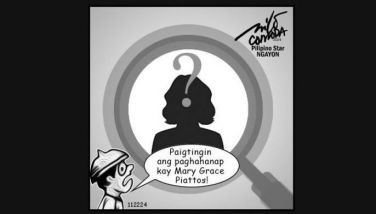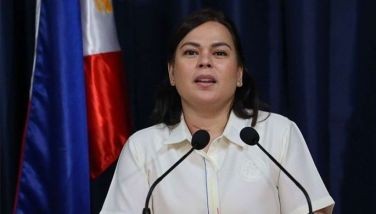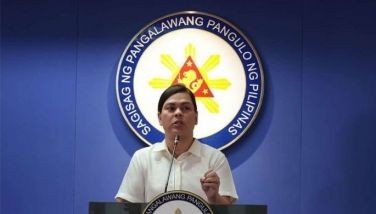A new hope in Philippine politics, a new catalyst for the Phil Stock Market
Often, fund managers look at balance sheets of companies, the price action, technical and fundamental data, and economic figures when making investment decisions. However, there are times when we have to incorporate political analysis into our broader investment strategy. With the presidential elections just a few months from now, we recognize the need for an assessment of the political conditions and their corresponding macroeconomic implications.
The Presidential aspirants
1) Gilbert “Gibo” Teodoro, Jr. (born June 14, 1964) – He is the current Secretary of National Defense. He represents the merged administration party, Lakas-Kampi-CMB. Aside from the political machinery backing him, he boasts of high educational qualifications. He finished High School in Xavier. He holds a Bachelor’s Degree in Commerce (De La Salle University, 1984), a Bachelor of Laws (University of the Philippines, 1989), and a Master of Laws (Harvard Law School, 1997).
2) Manuel “Manny” Villar, Jr. (born December 13, 1949) – He is currently a member of the Senate. He was previously Speaker of the House of Representatives from 1998 to 2000 and President of the Senate from 2006 to 2008. In terms of the number of years in politics, he is the most qualified with 17 years. He is popular because of rags-to-riches story of turning a 10,000-peso sand and gravel business in 1975 into a multi-billion peso property business. He is the president of the Nacionalista Party.
3) Manuel Leuterio “Noli” de Castro (July 6, 1949) – He is the current Vice President of the Republic of the Philippines. A former broadcast journalist, he first came to public office in 2001 as a member of the Senate in 2001. He is the reluctant presidential candidate. He should actually be the strongest candidate for president, but his reluctance may prove to be his undoing.
4) Joseph “Erap” Estrada (born April 19, 1937) – He was the 13th President of the Philippines, serving from 1998 until his ouster in the 2001 EDSA Revolution. In 2007, he was found guilty of plunder and sentenced to reclusion perpetua, but was later pardoned by President Arroyo. He is very popular with the masses. However, the recent expose by Senator Lacson and the question on the legality of seeking a second term may bring down his chances. He represents the Partido ng Masang Pilipino.
5) Francis “Chiz” Escudero (born October 10, 1969) or Loren Legarda (born January 28, 1960) – Both represent the Nationalist People’s Coalition but the choice for standard bearer has not yet been finalized. Both are currently members of the Senate. Chiz holds a Bachelor of Laws (University of the Philippines, 1993) and a Masters in International and Comparative Law (Georgetown University Law Center, 1996).
Meanwhile, Loren, originally a broadcast journalist, twice ran for the Senate in 1998 under Lakas-NUCD-UMDP and in 2007 under Genuine Opposition. In both cases, she received the highest number of votes.
6) Benigno “Noynoy” Aquino III (born February 8, 1960) – He is currently a member of the Senate. He was previously Deputy Speaker of the House of Representatives. He holds a Bachelor of Arts degree in Economics (Ateneo de Manila University, 1981). In an SWS survey released last week, Noynoy who is running under the Liberal party got 50 percent of the votes from Luzon. Meanwhile, the Noynoy Aquino-Mar Roxas tandem was the choice of 51 percent of the voters surveyed.
Changing political mood
In previous articles, we have noted that people have lost interest in politics. Some have grown tired of the political wrangling. Majority have developed political apathy and would not go to the streets anymore.
In one article, when there were calls for people power against President Arroyo, we said: “Amid all the various tales being rammed down our throats through the media by the spin doctors of both camps, we have learned to think critically. We have all gotten tired and weary of swinging from one end of the political pendulum to the other...Local politics has taken the backseat as far as investors are concerned (see Politics has taken a back seat, July 17, 2006 issue of The Philippine Star).”
In another article, when administration bets went to the opposition during the 2007 Senatorial elections and vice versa, we mentioned that: “You can no longer tell who stands for what. They are all the same. There’s no ideology that unites politicians. There’s no party loyalty, only political convenience. Turncoats abound (see Politics: Only in the Philippines, February 5, 2007 issues of The Philippine Star).” That is why despite the clamour before for President Arroyo to step down, people were not responding.
This time around, we see a distinct difference. In the past few years, people had total disinterest to join political rallies. This past month, however, there has been a growing sense of interest in politics again. This is especially true after the passing former President Cory Aquino. The death of the Philippine icon of democracy has rekindled a sense of unity, nationalism, and a cry for change among Filipinos.
Yellow army is alive again
During President Aquino’s wake and burial, people from all walks of life lined up to pay their last respects. People from all social classes, more importantly the middle class, took the streets again, reminiscent of the 1986 People Power Revolution.
It was also noteworthy to see politicians from different party affiliations come together as one to pay the final tribute to President Aquino. Even basketball rivals La Salle and Ateneo joined forces one day, replacing the usual sea of blue and green (shirts) at the Araneta Coliseum with a sea of yellow (see Cory Magic & the Stock Market in the Aug. 10, 2009 issue of The Philippine Star).
Middle class comes forth
Throughout history, it is the middle class (or the bourgeois) which always starts a change or a revolution. Change comes about only when the middle class acts. This was evident in EDSA 1 and EDSA 2 People Power revolutions but was not present during the calls for President Arroyo’s resignation. After EDSA 2, even when Cory was at the forefront, the middle class refused to join.
So when La Salle and Ateneo wore yellow, it was the first signal that something in the air is brewing – that the “inteligencia” or the elite has awakened. There was political apathy before. However, political enthusiasm has been revived. President Aquino’s death has stirred up the middle class once more, just like she did two decades ago.
Mar’s supreme sacrifice
Mar paved the way for Noynoy’s candidacy after he backed out of the race to support Noynoy. His credentials (as a graduate of the Wharton School of Economics, experience in investment banking, an eight-year stint as a member of the House of Congress and his four-year stint as Trade Secretary) is a perfect complement for the criticism of Noynoy’s lack of experience.
Mar’s supreme sacrifice started the ball rolling for Noynoy. The next survey, which may show the Noynoy-Mar tandem forging ahead by a wide margin, may cause others to back out too.
Ninoy and Cory magic passes on to Noynoy
What Cory failed to achieve in her lifetime, she achieved in her death. She has roused the Filipino people from slumber. In fact, Noynoy’s overwhelming lead in the recent survey means that the people are now clamouring for change. It is similar to the passing of the torch from Ninoy to Cory after his assassination. Now, Cory is passing on the mantle to Noynoy after her death.
Of late, there has been a groundswell for Noynoy-Mar among businessmen, executives and students. In business meetings, parties, get-togethers and social networking sites like Facebook, the excitement of a Noynoy-Mar candidacy is evident. As a team, Noynoy-Mar appears to be the choice of the middle class. Their tandem offers the credibility, sincerity, integrity and viability that the Filipino middle class is looking for.
Mar is the one who will provide the expertise and experience, having all the credentials of leadership and of a support network around him.
New hope, new beginning, new catalyst for the stock market
Presidential elections often influence the stock market. In India, for example, when the Congress party won a surprisingly decisive victory last May, stocks instantly went up 17 percent the next day. In Taiwan, when the opposition Kuomintang party won a landslide victory back in January 2008, stocks went up five percent in two days. In fact, a few weeks before the elections, when the Kuomintang appears to have a clear victory, stocks were already surging higher.
A perceived overwhelming victory will move the market up even before the actual elections. Just like the experience in Taiwan, the Ramos’ victory in 1992 and President Arroyo’s victory in 2004 against FPJ, stocks went higher even before the first vote was cast.
A victory by Noynoy and Mar in 2010 would bring new hope and a new beginning to Filipinos just like what Cory did in 1986. Moreover, a decisive victory would be a clear catalyst for the stock market to move higher.
For comments and inquiries, you can email us at [email protected]. You can also view our archived articles at www.philequity.net or www.yehey.com/finance.
- Latest
- Trending



























